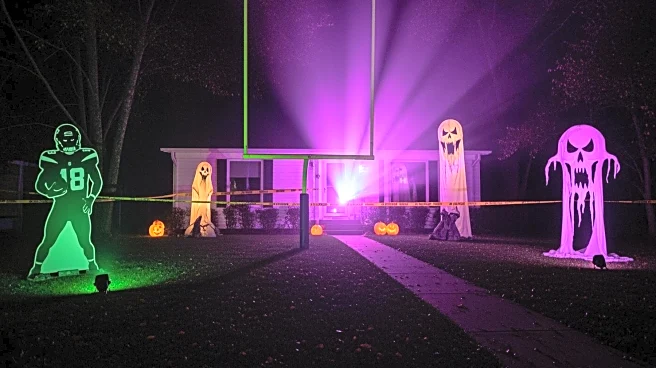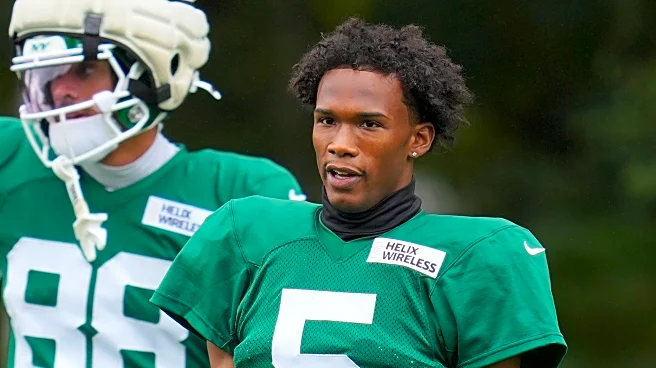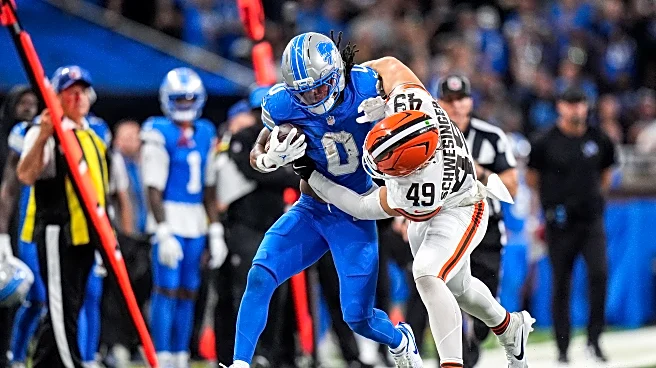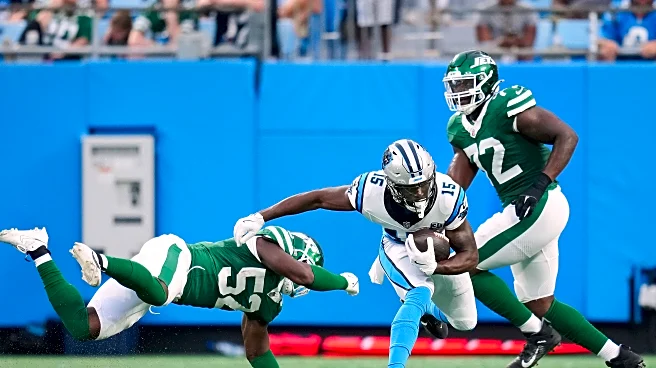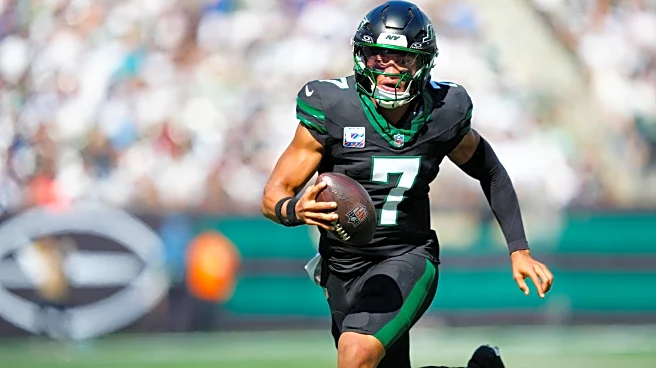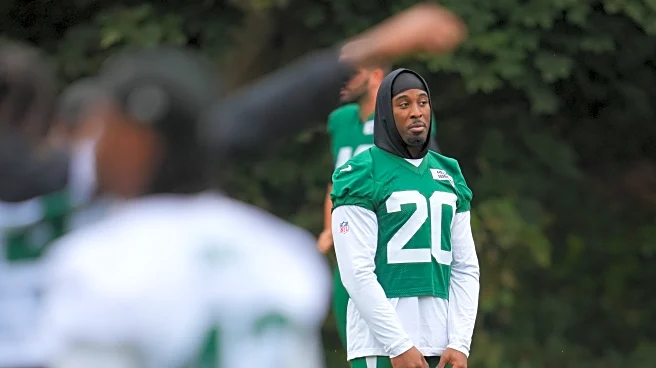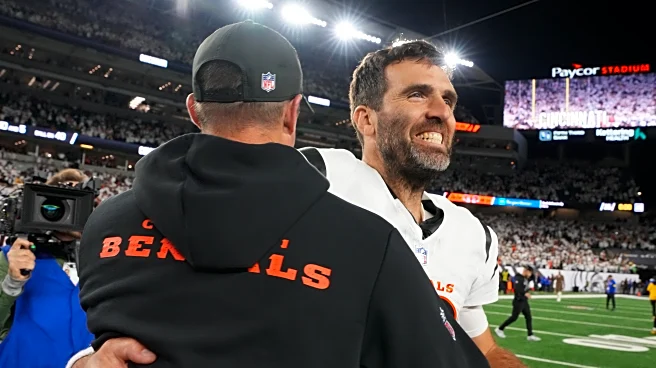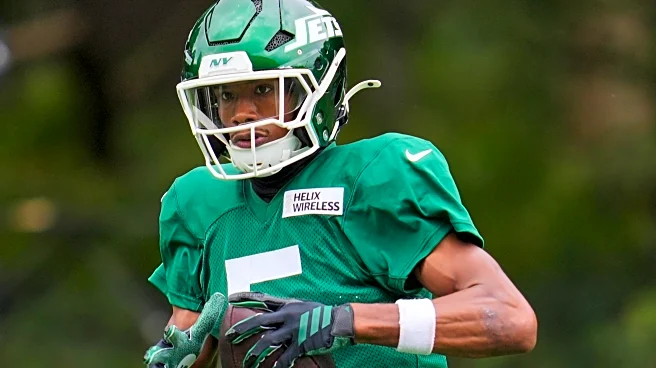What's Happening?
New York Jets fans are creatively expressing their frustration with the team's performance through Halloween decorations. Aaron Lohman, an NYPD sergeant from Seaford, Long Island, has set up a display titled 'Last Jets Super Bowl Party,' featuring a skeletal
Joe Namath, referencing the team's last Super Bowl win in 1969. This display has evolved since its inception in 2021, initially starting as a small bar with two skeletons. The display has gained popularity, being shared on social media platforms like Instagram. Another display in Hoboken, New Jersey, features skeletons in Jets attire with a sign reading 'Dying for a Win,' further illustrating the fans' discontent with the team's current 0-6 record.
Why It's Important?
The creative displays by Jets fans underscore the deep-seated frustration and loyalty of the fanbase despite the team's ongoing struggles. The Jets' poor performance this season, reflected in their winless record, has become a source of humor and coping for fans. This phenomenon highlights the cultural impact of sports teams on their supporters, where even poor performance can inspire community engagement and creative expression. The displays also serve as a reminder of the long-standing challenges faced by the Jets, a team with a storied history but limited recent success, affecting both the morale of fans and the broader perception of the franchise.
What's Next?
As the Jets continue their season, the team and its management may face increased pressure to address performance issues and improve results. The fanbase's creative expressions of dissatisfaction could prompt discussions within the organization about strategies for rebuilding and achieving success. Additionally, these displays may inspire other fans to find unique ways to express their support or critique, potentially leading to a broader cultural trend of using humor and creativity to engage with sports teams' performances.
Beyond the Headlines
The use of Halloween displays to comment on the Jets' performance reflects a broader cultural trend where sports fandom intersects with creative expression. This trend highlights the role of sports as a cultural touchstone, where fans use humor and satire to cope with disappointment. It also raises questions about the impact of long-term underperformance on a team's brand and fan loyalty, potentially influencing future marketing and engagement strategies.
